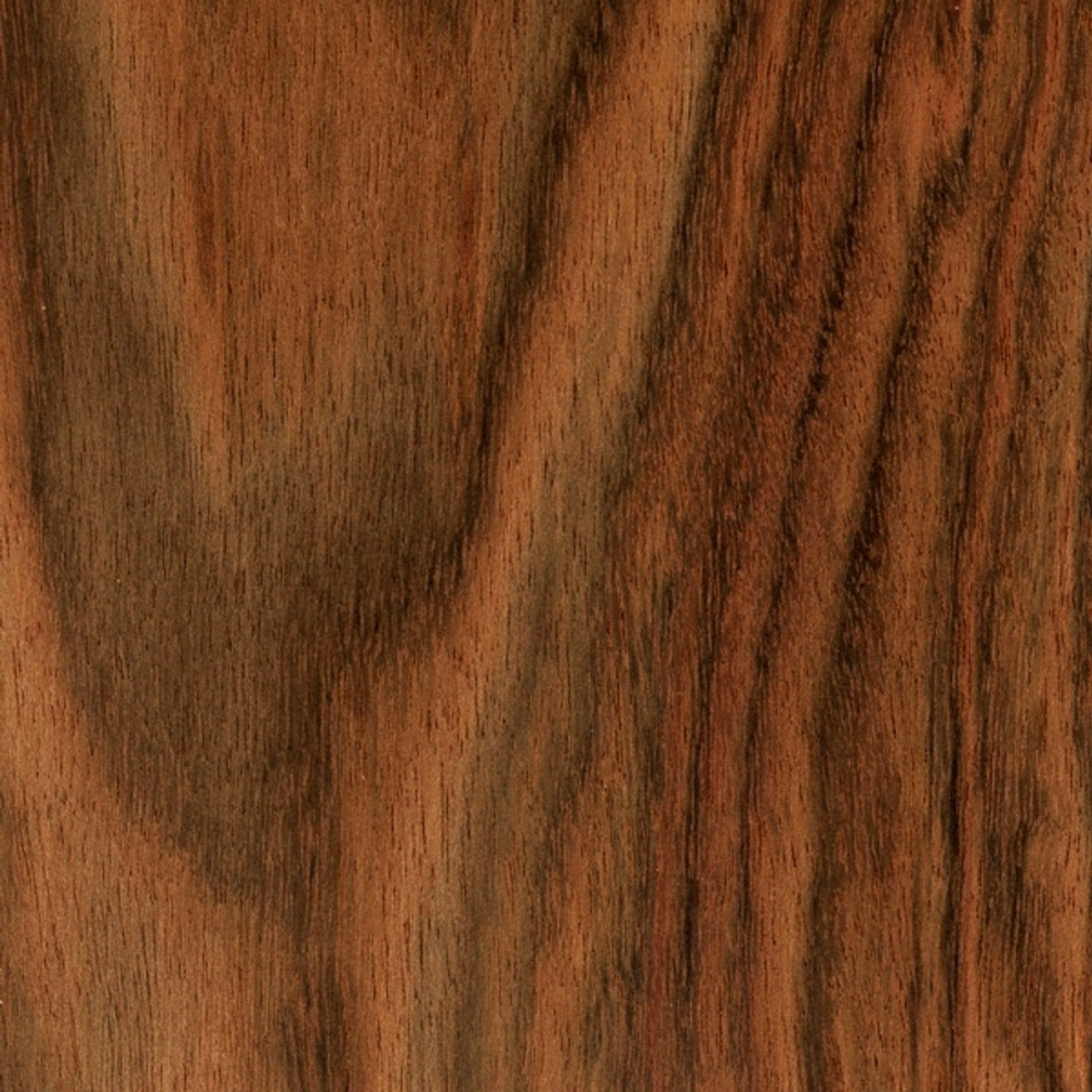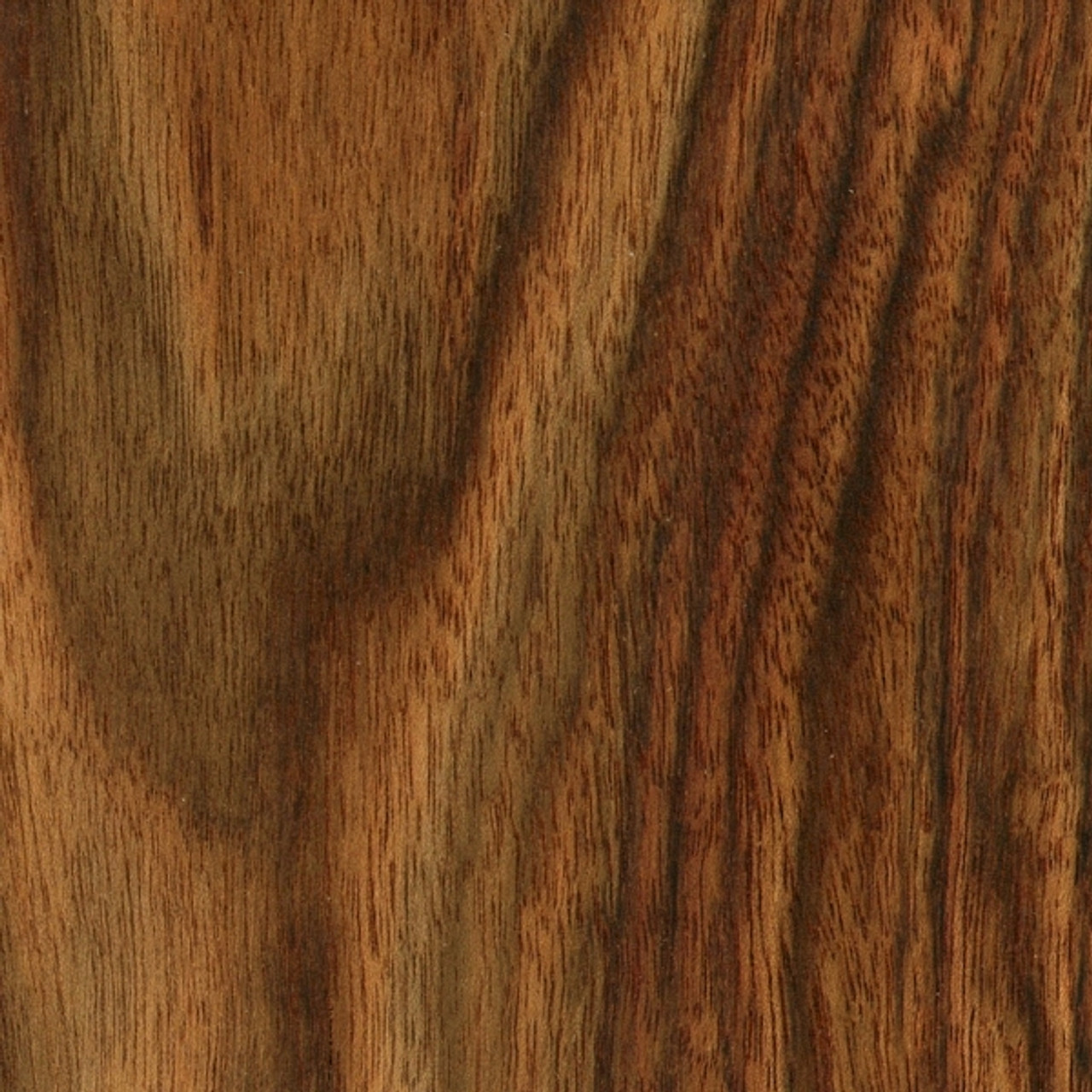Product Description
LUMBER SURFACED ON 4 SIDES TO SIZES SHOWN + or - 1/4Common Name(s): Chechen, Chechem, Black Poisonwood, Caribbean Rosewood
Scientific Name: Metopium brownei
Distribution: Dominican Republic, Cuba, Jamaica, northern Guatemala, Belize, and southeastern Mexico
Tree Size: 50-115 ft (15-35 m) tall, 3-5 ft (1-1.5 m) trunk diameter
Average Dried Weight: 62 lbs/ft3 (990 kg/m3)
Specific Gravity (Basic, 12% MC): .78, .99
Janka Hardness: 2,250 lbf (10,010 N)
Modulus of Rupture: No data available
Elastic Modulus: No data available
Crushing Strength: No data available
Shrinkage: Radial: ~4%, Tangential: ~6.5%, Volumetric: ~10%
Color/Appearance: Heartwood color is highly varied, with red, orange, and brown contrasted with darker stripes of blackish brown. Color tends to shift to a darker reddish brown with age. Well defined sapwood is a pale yellow
Grain/Texture: Grain is usually straight, but may be wild or interlocked. With a uniform medium to fine texture and good natural luster.
Endgrain: Diffuse-porous; medium to large pores in no specific arrangement; solitary and radial multiples of 2-4; tyloses and other heartwood deposits abundant; growth rings indistinct; rays not visible without lens; parenchyma vasicentric, and aliform (lozenge).
Rot Resistance: Rated as being very durable, and moderately resistant to most insect attacks.
Workability: Fairly easy to work, but tearout may occur when machining pieces with interlocked grain. Glues and finishes well, though because of its density and tendency to split, nails and screws should be pre-bored.
Odor: No characteristic odor.
Allergies/Toxicity: Although severe reactions are quite uncommon, Chechen has been reported as a sensitizer. Usually most common reactions simply include eye and skin irritation. See the articles Wood Allergies and Toxicity and Wood Dust Safety for more information.
Pricing/Availability: Generally available as lumber, though turning blanks and thin craft lumber is also sold. Chechen is touted as a low-cost substitute for more expensive tropical woods, and prices should be moderate for an imported hardwood.
Sustainability: This wood species is not listed in the CITES Appendices or on the IUCN Red List of Threatened Species. Common Uses: Veneer, furniture, cabinetry, flooring, turned objects, and small specialty wood items.
Comments: Its alternate name, Black Poisonwood, comes from its toxic sap, which turns black and causes severe skin reactions similar to poison ivy—and both are classified in the same family: Anacardiaceæ. However, the wood itself is safe to handle, though there are some allergenic reactions associated with the wood dust. Because of its density, natural luster, and beautiful coloration, Chechen is sometimes referred to as Caribbean Rosewood, though it is not a true rosewood in the Dalbergia genus.
















